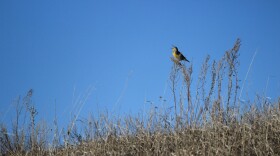January is in the rearview mirror, as is a good portion of February. And whether Punxsutawney Phil saw his shadow or not, no self-respecting North Dakota groundhog would stick their head out of the burrow in early February. Any thoughts of spring are premature. Or are they?
Even though the winter landscape sometimes looks quiet and almost abandoned, looks can be deceiving. Many small mammals such as shrews, voles, and deer mice have remained active all winter, some even reproducing.
Great Horned Owls
It may surprise some of you that the breeding season for great horned owls will start soon, if it hasn’t already. They are known to begin their breeding season in North Dakota in late February. Their calls are more frequently heard this time of year as they stake out their territory and call for a mate.
It might seem like it is way too early for nesting, but the incubation period takes about a month, and the young remain in the nest for another six to seven weeks. So, by the time they are ready to fly, it is into June.
Beavers
Beavers of course have been spending their winter in the safety of their lodges and under the ice with their cached branches of aspen and willow. They are well into their breeding season which runs roughly January through February. The young, however, will not be born until May or June.
Coyotes and Foxes
The breeding season for deer and other large mammals was last fall, but love is in the air now for several other common but smaller North Dakota mammals. The mating season for both coyotes and red foxes, for example, began in January, while that of raccoons and spotted skunks generally begins in February.
The timing of all of this is, of course, to increase the chances for the survival of the offspring. Most young of the year will be born when environmental conditions and food availability are about as good as it gets during the cycle of the seasons. For many that is around May-June.
So, as you travel about and look out at that seemingly quiet landscape these days, give some consideration to the many animals that are already active in trying to ensure the next generation of their species get off to a good start.





